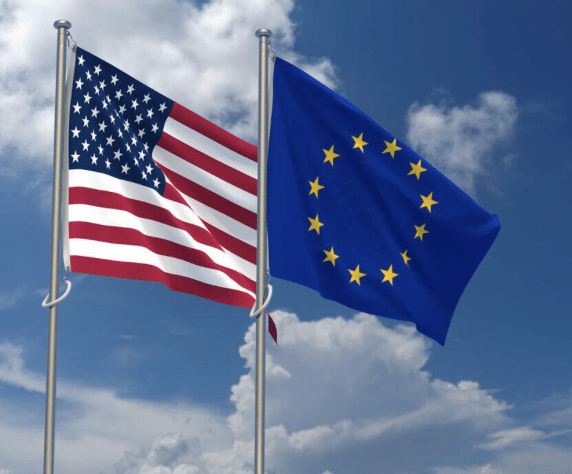A Transatlantic Look at Competition Policy: Navigating the Year Ahead
By Monique Bellamy, senior director in APCO Worldwide, New York office and Benjamin Faull, senior director, APCO Worldwide, New York office

Because of recent legislative developments on both sides of the Atlantic, the times of fluid and smooth cooperation between the European Union (EU) and the United States are over, at least on economic, trade, competition and antitrust affairs.
On each side of the Atlantic, new public policies are riling the waters, not only in their “home” jurisdictions but also in their counterparts across the ocean. These effects—some intended, others unintended—will take the reach of antitrust beyond the enforcement of individual cases to wide-ranging new areas of regulation and intervention.
NOW IS THE TIME TO PREPARE FOR CHANGES AND CHALLENGES
Global entities, public and private, can’t foresee all the ultimate consequences of these new developments. But many are already foreseeable and transnational corporations can and must prepare for them—and expert advisers, such as APCO Worldwide, can be essential for anticipating, and adapting to, transformative change.
FIRST, THE BACKGROUND
Across the EU and the United States, the tectonic plates underlying public policies have been shifting.
Certain European leaders increasingly believe their economies and local markets need protection from China, while the U.S. Inflation Reduction Act, with its support for U.S. domestic industries, also seems threatening to Europe’s renewable energy capabilities.
For its part, the United States is stepping up its antitrust enforcement game, driven by the Biden administration’s belief that market concentration is excessive—and that, therefore, a much-expanded set of merger review criteria and willingness to litigate are necessary to ensure healthy competition.
THE EU STEPS UP REGULATION
As global entities, including transnational corporations navigate these policies, they need to understand these potential “pain points” in the year ahead:
- Increased Merger Scrutiny: Overall, the European Commission is requiring considerably more information during merger reviews, with more stakeholders attempting to impact the outcomes.Merger reviews now include a higher degree of data, legal and economic analysis, and expertise. The results: longer periods of instruction for the notifications, more expensive procedures for the merging parties and more sophisticated litigation before the European Courts.In addition, under Article 22 of the Merger Regulation, the European Commission will likely also continue to seek to prevent companies from acquiring newly created/nascent companies especially in the technology, pharmaceutical and life sciences sectors.
- More Regulation of Digital Platforms: The EU’s Digital Markets Act (DMA), which came into effect in November 2022, subjects certain digital platforms to wide-ranging ongoing regulation by the European Commission. Approximately a dozen digital platforms, primarily in the United States, will be subject to the legislation, which defines and prohibits unfair business practices and abusive behavior. In addition to its impact on Europe, the DMA will likely set the standard for the regulation of digital platforms worldwide.
- Increased Oversight of Digital Content: The Digital Services Act (DSA), which also came into effect in November 2022, aims to improve the mechanism for removing illegal content and protecting users’ fundamental rights online by increasing oversight of online platforms. But its broad scope and complexity may make it difficult to implement.
- Investigating Foreign Investors: In another challenging development, foreign companies looking to invest in key or strategic sectors of the EU economy will be subject to the Foreign Subsidies Regulation (FSR) and the Foreign Direct Investment (FDI). These potentially lengthy, complex investigations by the European Commission and EU Member States. Chinese companies are the unacknowledged target, but not the only ones that will be impacted.
THE UNITED STATES EXPANDS ANTITRUST ENFORCEMENT
Meanwhile, American policymakers have enacted equally far-reaching legislation that will impact both domestic and global organizations:
- Subsidizing American Manufacturing: Signed into law in August 2022, the U.S. Inflation Reduction Act (IRA) is intended to boost clean energy, increase tax revenues, and reduce healthcare costs. Because it subsidizes domestic manufacturing including by U.S. subsidiaries of EU companies, European leaders view the IRA as an unfriendly protectionist scheme, threatening their economies and industries. Pressing the Biden administration for changes, the EU is considering countermeasures, potentially triggering a trade war. And the EU isn’t alone: Canada, Japan, South Korea and the UK also believe that the IRA’s subsidies may breach WTO rules.
- Increasing Filing Fees for Mergers: Raising additional revenues that can pay for stepped-up antitrust enforcement, The Merger Filing Fee Modernization Act increases filing fees for the largest mergers. Passed late in 2022, this law has yet to exert its impact upon the economies of the United States and the EU.
- More Funding for Antitrust: Yet another measure encouraging expanded antitrust activity, the Consolidated Appropriations Act, 2023, was signed into law in December 2022. It dramatically increases funding for the Federal Trade Commission (FTC) and the Antitrust Division of the Department of Justice.
In their aggregate impact, the new regulatory frameworks in the U.S. and Europe, combined with some seemingly uncoordinated policy decisions and increased enforcement of existing antitrust and competition law regimes, will create both significant risk and opportunities for global entities. With its complex web of overlapping regulations, directives and laws that may be difficult to navigate or enforce, this produces increased uncertainties in the marketplace, where the EU’s administrative center in Brussels, as well as economies across Europe and the UK, will present an ever more complex environment for multinational companies and investors to navigate.
This report offers a roadmap for potential pitfalls in the regulatory roadmaps of the United States and the EU in the difficult years ahead—and insights into how to navigate this changing and challenging new environment.
